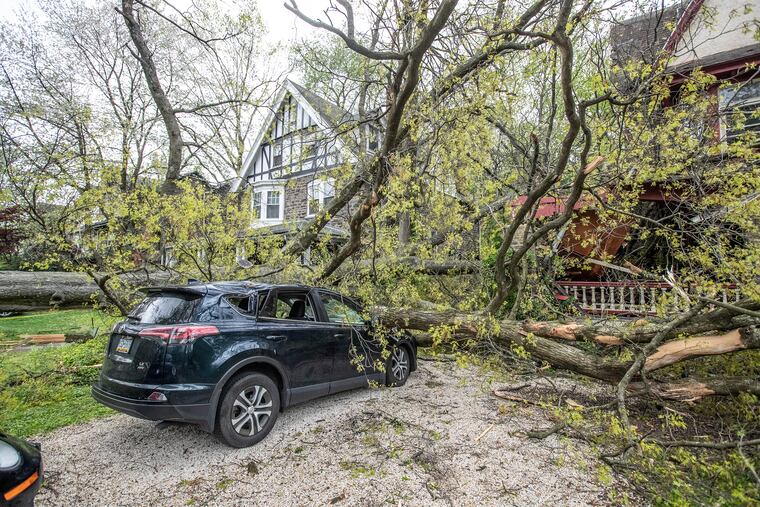In the heart of spring, it hasn’t been this chilly in 54 years in Philadelphia
After spinning all winter in the Arctic, the polar vortex decided to come south for spring.

Coolest April 14 to May 13 periods: Average daily temperatures
1875: 48.4 degrees
1874: 49.8 degrees
1882: 52.4 degrees
1907: 52.5 degrees
1966: 52.5 degrees
2020: 52.6 degrees
This time of year, the sun is about as strong as it would be in late summer. So why has it been feeling more like late autumn?
Through Wednesday, in the 30 days since a major chill-down took hold in the East, the overall average temperature in Philadelphia — 52.6 Fahrenheit — was the lowest for that period since 1966, based on an analysis of weather records dating to the 1870s.
That’s largely the result of two significant invasions of the polar vortex, the first in mid-April and the sequel arriving for Mother’s Day weekend, shattering records all over the mid-Atlantic and Northeastern United States.
Saturday’s high of 49 degrees in Philadelphia was the lowest maximum temperature for a May 9, and the eighth-lowest for any day in May, according to the Northeast Regional Climate Center.
» READ MORE: Saturday ties record for coldest May 9 in Philly
The vortex typically swirls around the poles, confining cold air in the high latitudes, often expanding and allowing frigid air to spill southward — in winter.
This year, however, the vortex appears to be suffering from seasonal dysfunction.
“To have such a strong polar vortex invasion during the warm season is rare,” said Judah Cohen, a scientist with Atmospheric & Environmental Research in Massachusetts, who specializes in Arctic atmospheric conditions.
Cohen said he did not have data to address just how rare such intrusions would be in spring and summer, but the most recent he could recall was in July 2014. He said he does know enough to say 'tis isn’t the season for the vortex.
“This is quite unusual,” said Dave Dombek, a meteorologist with AccuWeather Inc.
For most of the winter, an upper-air pattern kept the vortex spinning in and around the North Pole, he said. The result for the East Coast was a year largely without winter, followed by a spring in which the vortex evidently has been intent on making up for lost time.
» READ MORE: Philly’s nearly snowless winter: How it compares to previous snow-deprived seasons
» READ MORE: Winners and losers of Philly's winter without snow
While the atmosphere has a well-cultivated disdain for human calendars, the government doesn’t. In the nation’s world temperature database, February — be it 28 or 29 days — counts the same as January, with its 31. The weather service doesn’t break out records for 30- or 31-day periods. The extremes in the last two months won’t be captured in the monthly summaries.
So for the record, here are the April 14-May 13 highlights for Philadelphia: Temperatures, 6 degrees below normal; below-normal daily average temperatures on 24 of the 30 days; and wind gusts of 25 mph or better on 20 days.
The anti-spring forces are about to relent for at least a few days. Thursday could be the last day of below-normal temperatures at least through the weekend, and highs Friday might reach the low to mid-80s.
» READ MORE: For first time, Fairbanks, Alaska, hits 80 before Philadelphia; but our turn may be coming
Cool, rainy conditions might return next week, but don’t dispose of the air conditioners just yet, as the atmosphere is probably about due for a 180-degree turn.
“You can stretch that rubber band so far before it snaps back,” said Dombek. Then again, he added, “everything is out of whack this year.”